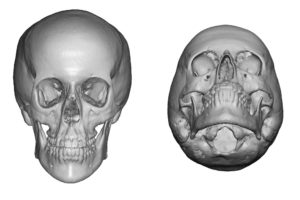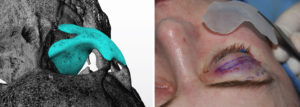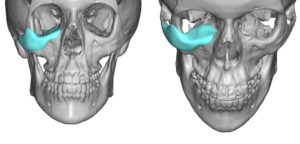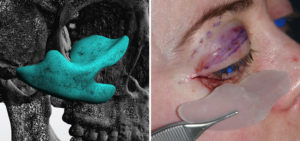Background: The shape and symmetry of the eyes is critically judged by many people because they are paired and are always the first thing seen on the face when looking in a mirror. Such critical assessment of the face has now become magnified with the proliferation of selfies and the widespread use of self-photography that has never been used in this way before.
The most common forms of eye asymmetry are in the lid themselves. Differences in lid height, skin quantity and attachments is what constitutes most patients’ eyelid asymmetry concerns. The least common form comes from the bone itself and is called vertical orbital dystopia.(VOD) Often as part of an overall facial asymmetry the entire orbital bony box is lower (also possible to be higher but much more rare) and the overlying lid tissues follow as a result. While VOD is often perceived as part of a craniofacial deformity, most cases are more aesthetic in nature with differences in the horizontal pupillary levels of 3 to 5mms.
The fundamental approach in VOD is to build from the inside out. The most accurate method is to get a 3D CT scan of the midface and mirror the normal side onto the lower side. This is a conjoined orbitozygomatic implant reconstruction to optimize the skeletal correction. The skeletal correction must also consider raising the lower brow bone or reshaping the superolateral orbit to raise it to the level of the opposite side.



Additional procedures were performed including superiolateral orbital bone removal and a high lateral canthoplasty performed through an upper eyelid incision. A cheek lift was done with suspension to the implant as well as a 2mm right upper eyelid ptosis repair.
Vertical orbital dystopia surgery treats all anatomic elements of the deformity from that of the bone to the soft tissues. The position of the upper and lower eyelids can not be ignored when the eyeballl is being elevated from its congenital position. Such surgery must be more encompassing than a mere orbital floor implant alone.
Highlights:
1) Vertical orbital dystopia is a skeletally-based form of eye asymmetry.
2) A 3D custom implant that augments the lower orbital floor and rim as well as augments the cheek provides the best form of skeletal correction.
3) Management of the overlying eyelids and the lower brow bone must also be considered in conjunction with the skeletal correction.
Dr. Barry Eppley
Indianapolis, Indiana




